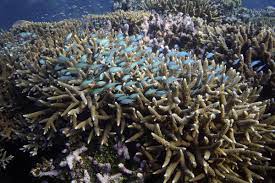Five New Species Of Black Corals:

Some researchers have discovered five new species of Black Corals living as deep as 2,500 feet (762 metres) below the surface in the Great Barrier Reef and Coral Sea off the coast of Australia.
- Black corals (Anthozoa: Antipatharia) can be found growing both in shallow waters and down to depths of over 26,000 feet (8,000 metres), and some individual corals can live for over 4,000 years.
- However, the taxonomy of black corals is poorly known compared to many other anthozoan groups
- Many of these corals are branched and look like feathers, fans or bushes, while others are straight like a whip.
- Unlike their colourful, shallow-water cousins that rely on the sun and photosynthesis for energy, black corals are filter feeders and eat tiny zooplankton that are abundant in deep waters.
- Similarly, to shallow-water corals that build colourful reefs full of fish, black corals act as important habitats where fish and invertebrates feed and hide from predators in what is otherwise a mostly barren sea floor. For example, a single black coral colony researchers collected in 2005 off the coast of California, United States, was home to 2,554 individual invertebrates.
Coral Reefs:
- Corals are marine invertebrates or animals which do not possess a spine. In scientific classification, corals fall under the phylum Cnidaria and the class Anthozoa.
- Coral is made up of genetically identical organisms called polyps.
- These polyps have microscopic algae called zooxanthellae living within their tissues.




